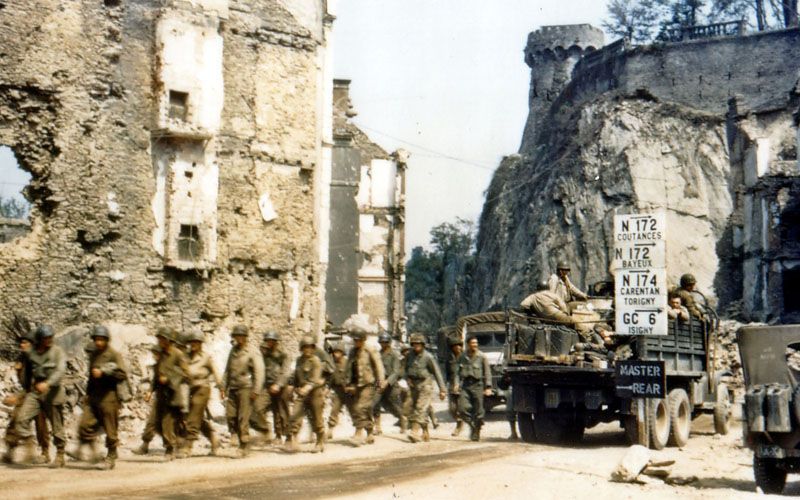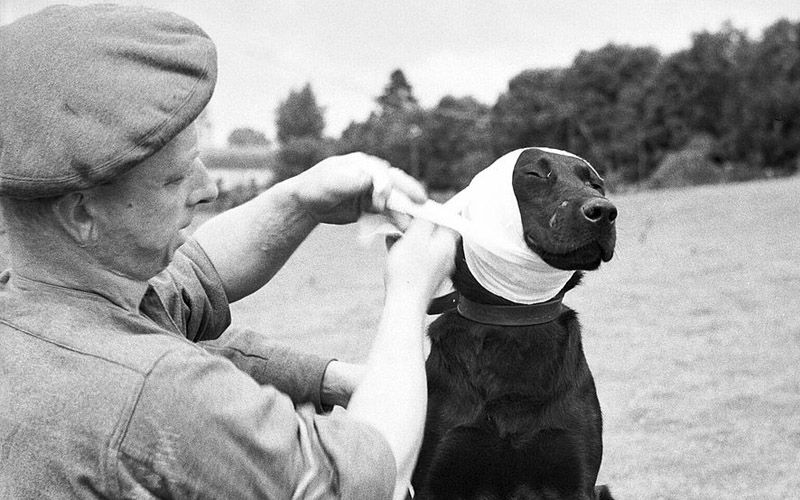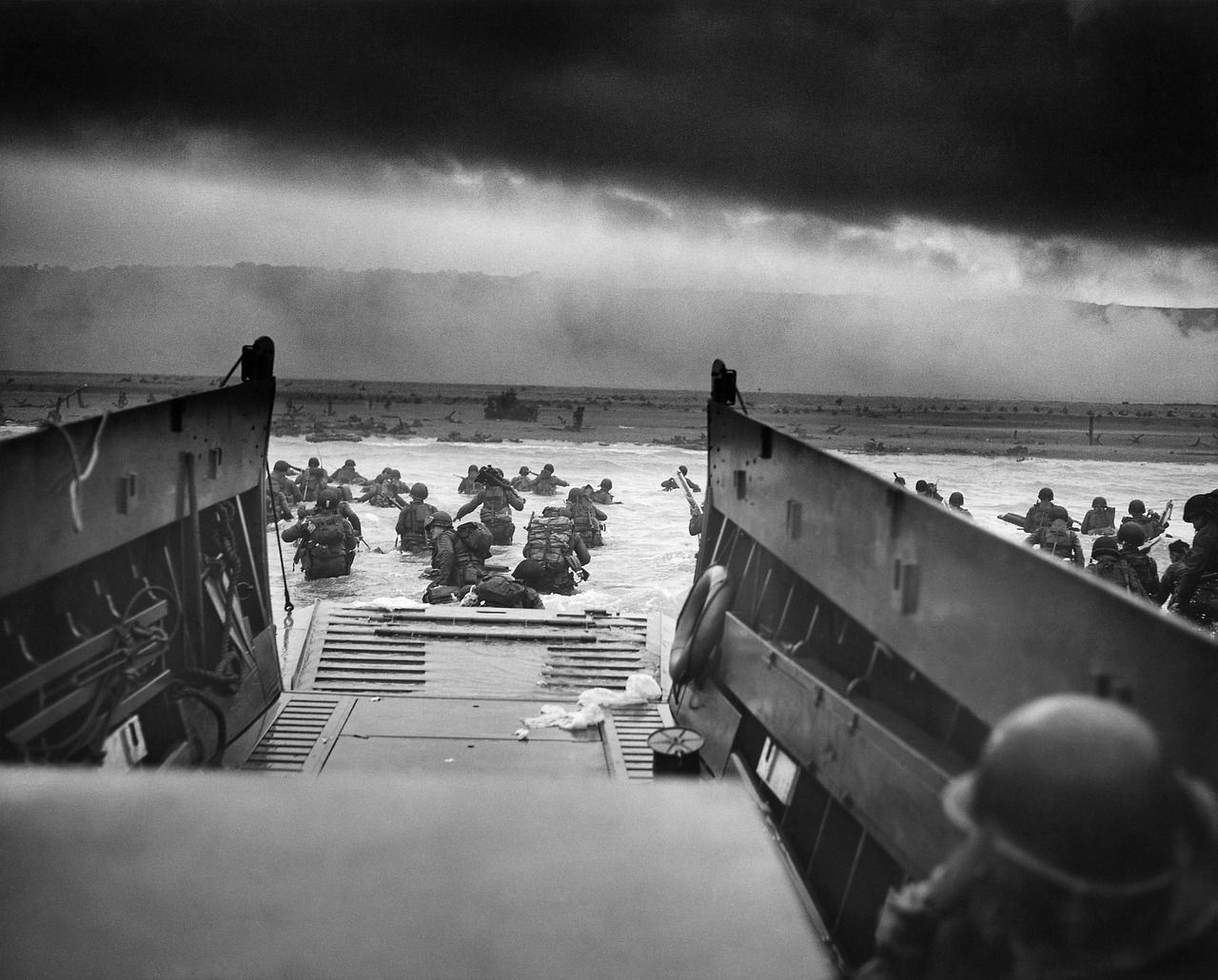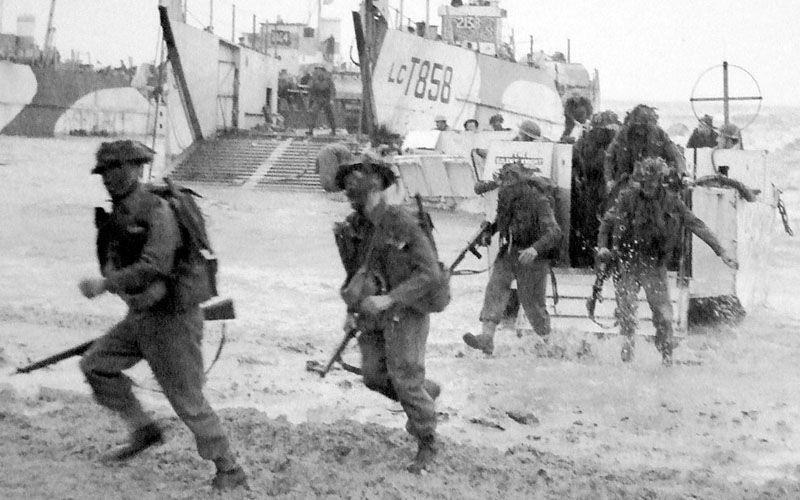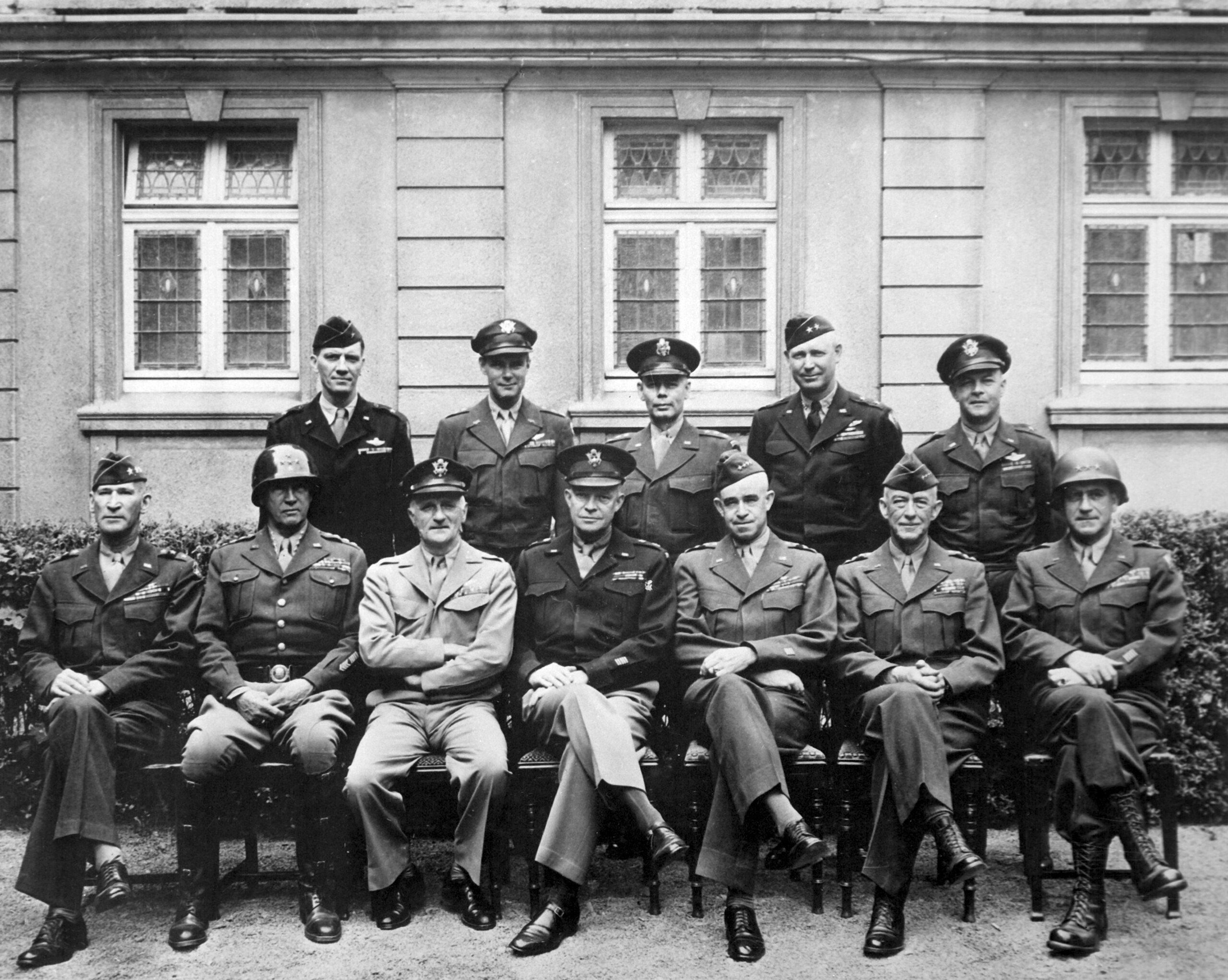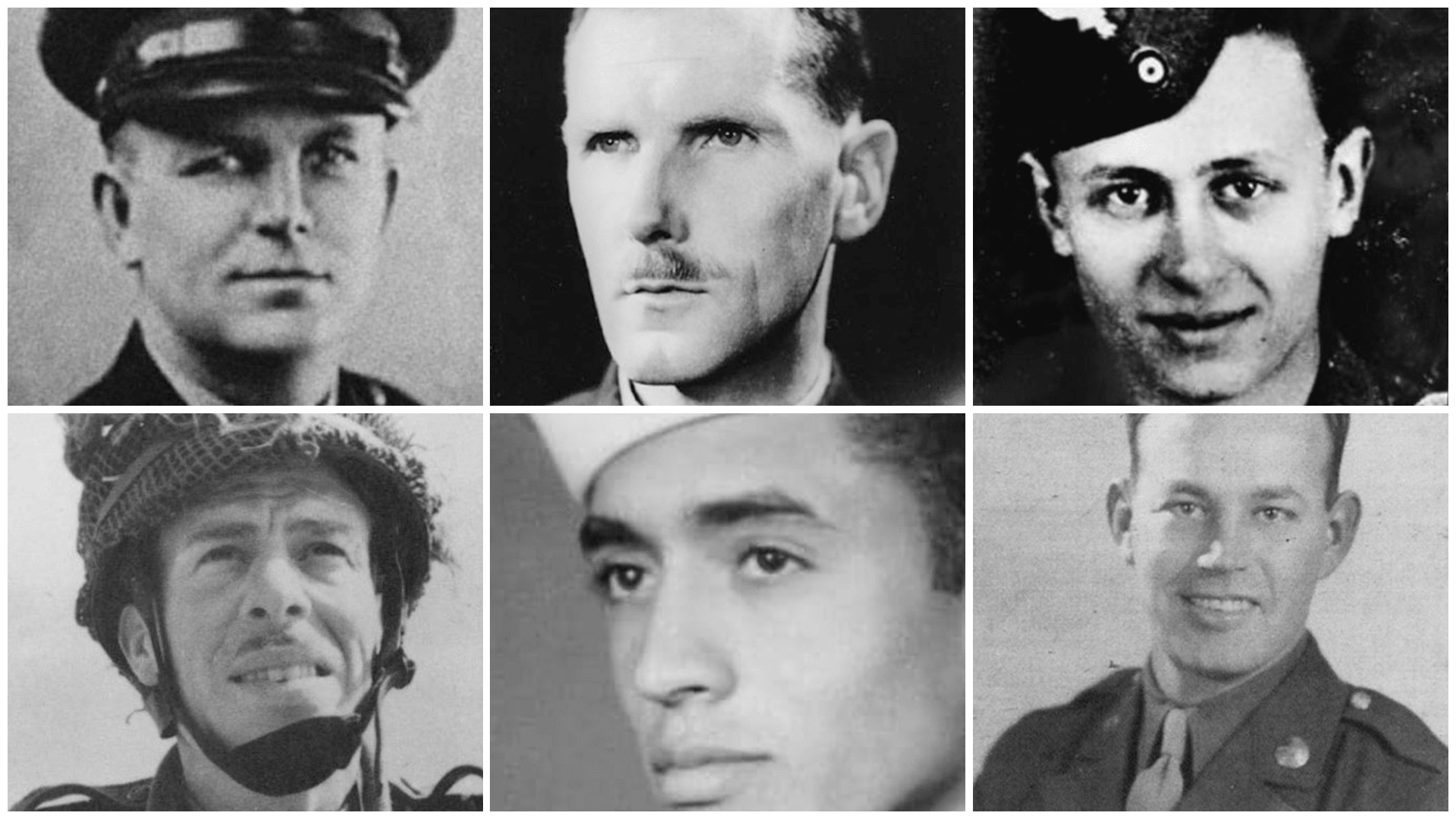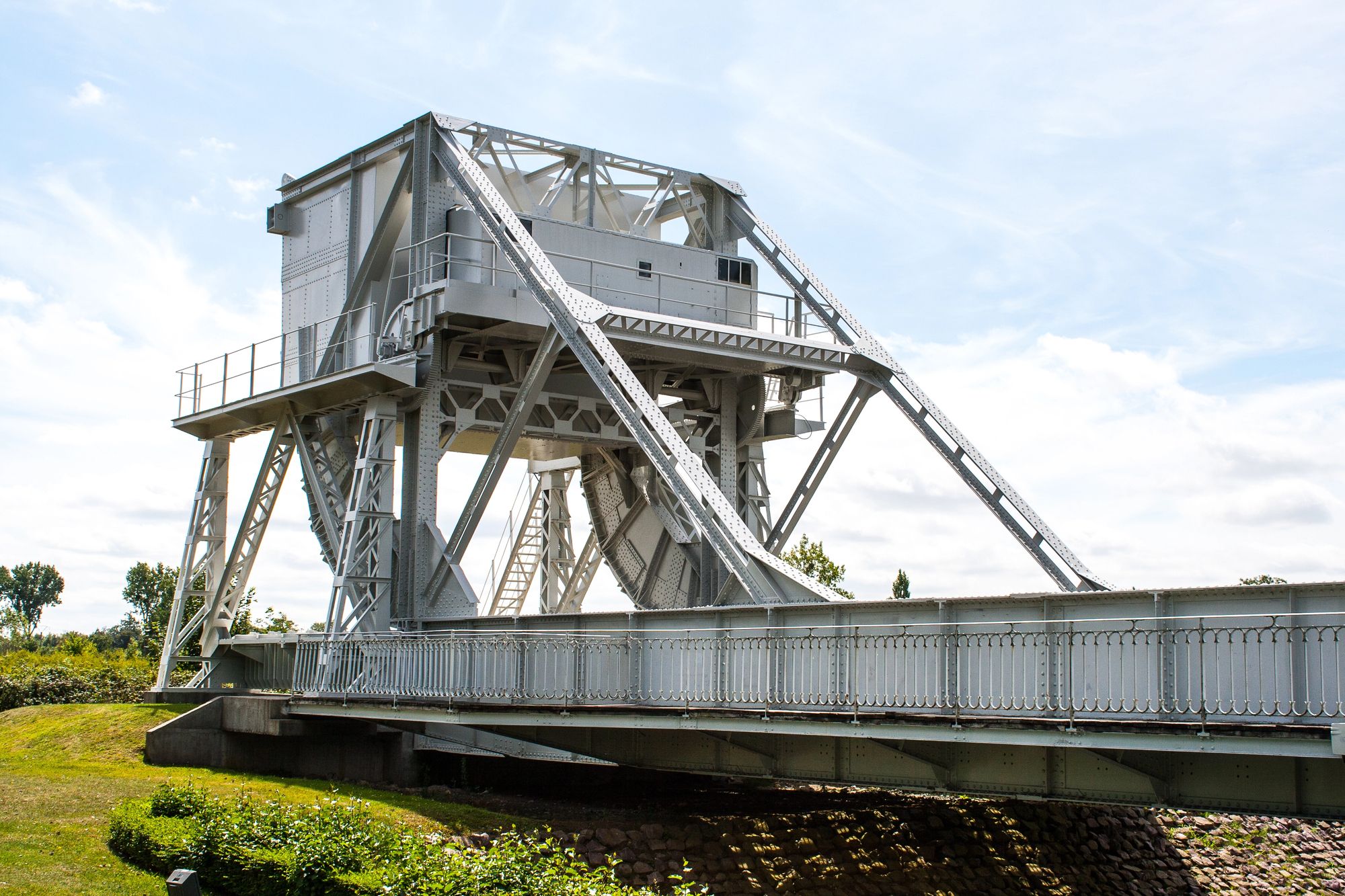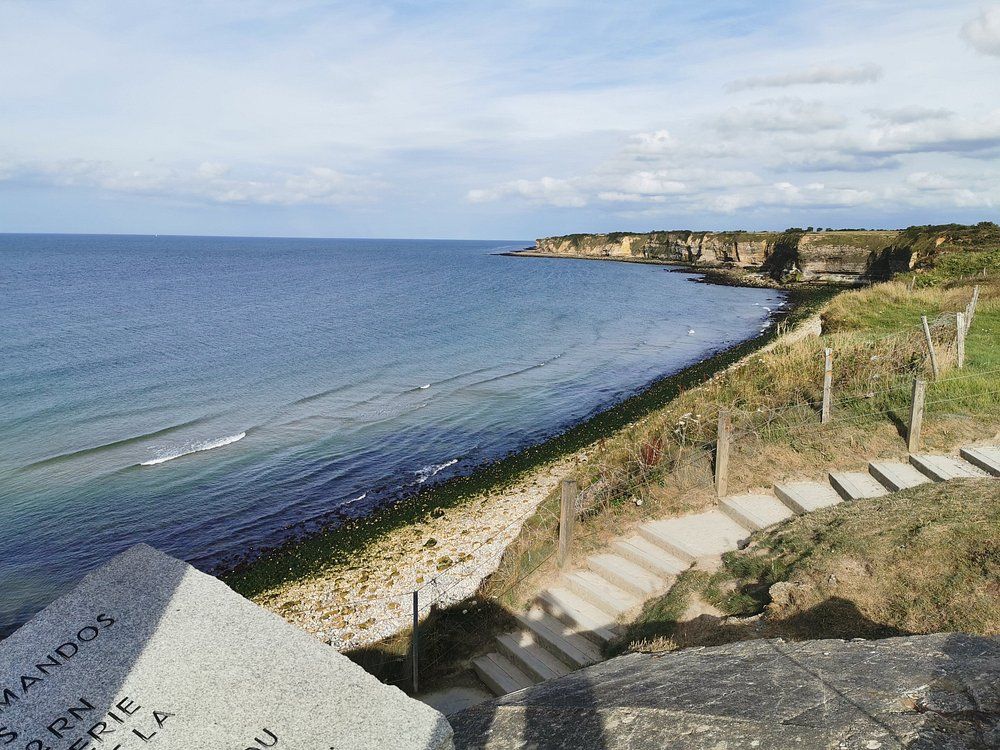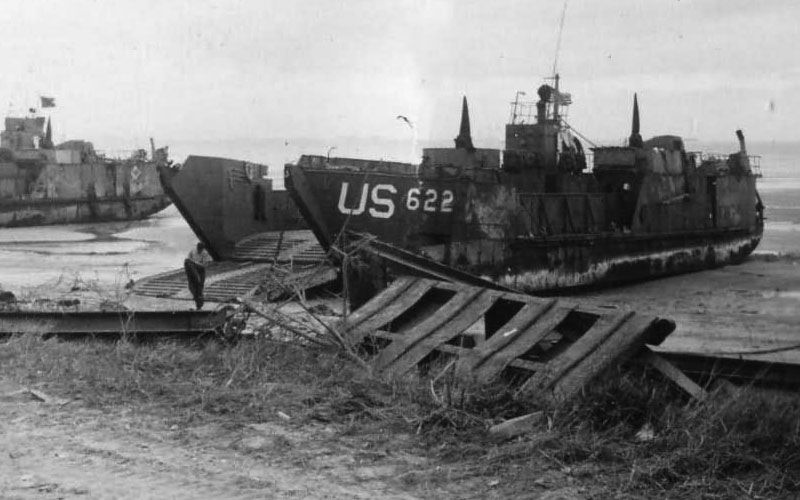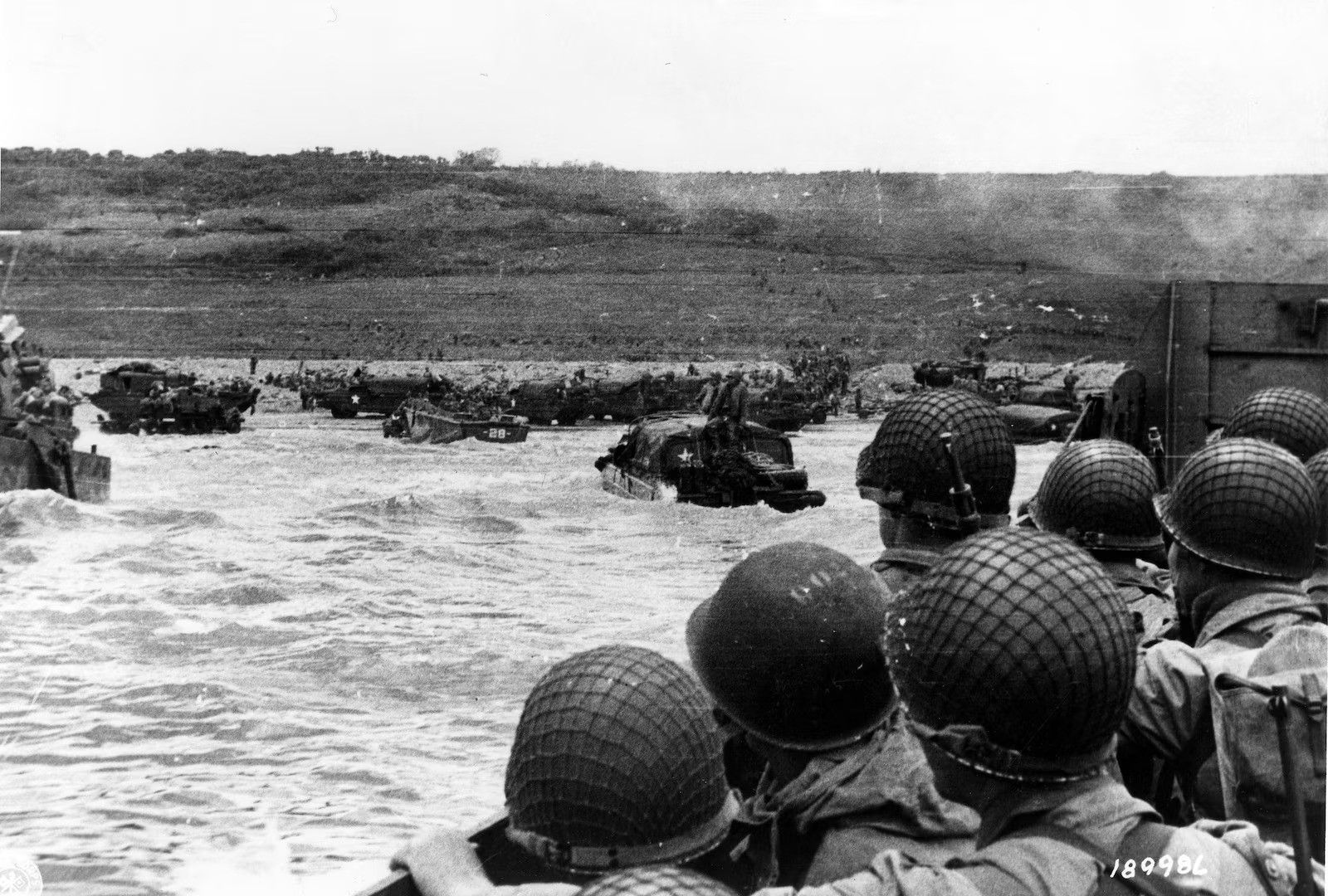Although D-Day had been a success with a foothold achieved on the shores or Western Europe and lower than feared casualty figures, the Allies’ progress in the coming days and weeks was somewhat less favourable than the operational planners had intended. The invasion plans had called for the capture of Saint-Lô, Caen, and Bayeux on the first day and a front line of 6 to 10 miles from the beaches. It would take six weeks for British and Canadian troops to capture Caen and more than a month for American forces to enter Saint-Lô. British troops of the 50th Northumbrian Division did manage liberate Bayeux on D+1 without significant damage to the town.
In the western part of the invasion area, American forces were assigned the task of occupying the Cotentin Peninsula and capturing the important port town of Cherbourg, which would provide the Allies with a deep water harbor. The terrain behind Utah and Omaha was characterized by bocage, with thorny hedgerows on embankments 3 to 4 feet high with a ditch on either side. These concealed well German rifle pits and machine-gun emplacements and made every inch of ground bitterly contested. The Germans had also flooded the fields behind Utah with sea water for up to 2 miles (3.2 km) from the coast.
By D+3 the Allied commanders realized that Cherbourg would not quickly be taken, and decided to cut off the peninsula to prevent further German reinforcement. After failed attempts by the inexperienced 90th Infantry Division, Major General J. Lawton Collins, the VII Corps commander, assigned the veteran 9th Infantry Division to the task. They reached the west coast of the Cotentin on 17th June, cutting off Cherbourg. The 9th Division, joined by the 4th and 79th Infantry Divisions, took control of the peninsula in fierce fighting from 19th June; Cherbourg was captured on 26th June. By this time the Germans had destroyed the port facilities, which were not brought back into full operation until September.
I have full confidence in your courage and devotion to duty and skill in battle. We will accept nothing less than full Victory! Good luck! And let us beseech the blessing of Almighty God upon this great and noble undertaking.
- General Dwight D. Eisenhower, commander Supreme Headquarters Allied Expeditionary Force (SHAEF)
The fighting in the Caen area between the British and Canadians versus the 21st Panzer, the 12th SS Panzer Division Hitlerjugend and other units soon reached a stalemate. During Operation Perch, XXX Corps attempted to advance south towards Mont Pinçon but soon abandoned the direct approach in favor of a pincer attack to encircle Caen. XXX Corps made a flanking move from Tilly-sur-Seulles towards Villers-Bocage with part of the 7th Armoured Division, while I Corps tried to pass Caen to the east. The attack by I Corps was quickly halted and XXX Corps briefly captured Villers-Bocage. Advanced elements of the British force were ambushed, initiating a day-long Battle of Villers-Bocage and they were forced to withdraw back to Tilly.
Operation Epsom began on 26th June, after a delay due to the bad storms which had hit Normandy several days earlier. It was an attempt by VIII Corps to swing around and attack Caen from the south-west and establish a bridgehead south of the Odon river. The operation failed to capture Caen, but the Germans suffered heavy tank losses after committing every available Panzer unit to the battle.
Field Marshal von Rundstedt was dismissed on from his position as OB West on 1st July after remarking that the war was now lost. He was replaced by Field Marshal Günther von Kluge. The northern suburbs of Caen were bombed on the evening of 7th July and then occupied north of the River Orne in Operation Charnwood on 8th and 9th July. Operation Atlantic and Operation Goodwood captured the rest of Caen and the high ground to the south between 18th and 21st July, although by that time the city was almost completely lay in ruins.
On 20th July, Hitler survived an assassination attempt at his Eastern Front headquarters – known as the Wolf’s Lair – in occupied Poland. Despite the failure of the operation, the ramifications of the plot would have an impact on a number of senior German military figures.
After securing territory in the Cotentin Peninsula south as far as Saint-Lô, the U.S. First Army launched Operation Cobra on 25th July and advanced further south to Avranches by 1st August. The British launched Operation Bluecoat on 30th July to secure Vire and the high ground of Mont Pinçon. The American Third Army under General George Patton was activated on 1st August and subsequently took most of Brittany and territory as far south as the Loire, whilst the First Army maintained pressure eastward toward Le Mans to protect their flank. By 3rd August, Patton and the Third Army were able to leave just a small force in Brittany and drive eastward towards the main concentration of German forces south of Caen. On 4th August Hitler ordered a counter-offensive, Operation Lüttich, from Vire towards Avranches – against the advice of some of his generals.
While II Canadian Corps pushed south from Caen toward Falaise in Operation Totalize on 8th August, Generals Bradley and Montgomery realized that there was an opportunity for the bulk of the German forces to be trapped at Falaise. The Third Army continued the encirclement from the south, reaching Alençon on 11th August. Although Hitler continued to insist until 14th August that his forces should counter-attack, Field Marshall von Kluge and his officers began planning a retreat eastward. The German forces were severely hampered by Hitler’s insistence on making all major decisions himself, which left his forces without orders for periods as long as 24 hours while information was sent back and forth to the Führer’s residence at Obersalzberg in Bavaria.
On the evening of 12th August, General Patton asked Bradley if his forces should continue northward to close the gap and encircle the German forces. Bradley refused, because Montgomery had already assigned the First Canadian Army to take the territory from the north. The Canadians met heavy resistance and captured Falaise on 16th August. The gap was closed on 21st August. Although some 50,000 German troops were trapped, more than a third of the German 7th Army and the remnants of nine of the eleven Panzer divisions had escaped to the east. Montgomery’s decision-making regarding the Falaise Gap was criticized at the time by American commanders, especially Patton, although Bradley was more sympathetic and believed Patton would not have been able to close the gap.
Some goddamn fool once said that flanks have got to be secure. Since then sonofabitches all over the globe have been guarding their flanks. I don’t agree with that. My flanks are something for the enemy to worry about, not me. Before he finds out where my flanks are, I’ll be cutting the bastard’s throat.
- General George S. Patton, Commander US Third Army
Hitler relieved von Kluge of his command of OB West on 15th August and replaced him with Field Marshal Walter Model. Kluge committed suicide on 19th August after Hitler became aware of his involvement in the failed 20th July assassination plot.
The French Resistance in Paris rose against the Germans on 19th August. Eisenhower had initially wanted to bypass the city to pursue other targets, but amid reports that the citizens were going hungry and Hitler’s stated intention to destroy the city, de Gaulle insisted that it should be taken immediately. French forces of the 2nd Armoured Division under General Philippe Leclerc arrived from the west on 24th August, while the American 4th Infantry Division pressed up from the south. Scattered fighting continued throughout the night, but by the morning of 25th August Paris had been liberated.
Operations continued in the British and Canadian sectors until the end of the month. On 25th August, the American 2nd Armoured Division fought its way into Elbeuf, making contact with British and Canadian armored divisions. The 2nd Canadian Infantry Division advanced into the Forêt de la Londe on the morning of 27th August. The area was strongly held; the 4th and 6th Canadian brigades suffered many casualties over the course of three days as the Germans fought a delaying action in terrain well suited to defense. The Germans pulled back on 29th August, withdrawing over the Seine the next day. On the afternoon of 30th August, the 3rd Canadian Infantry Division crossed the Seine near Elbeuf and entered Rouen to a jubilant welcome.
Eisenhower took direct command of all Allied ground forces on 1st September 1944. He was concerned with possible German counter-attacks and the limited materiel arriving in France, he decided to continue operations on a broad front rather than attempting narrow thrusts. On 12th September, the Allied forces moving northwards from the South of France were able to link up with the forces in Normandy.
The Normandy landings were the largest seaborne invasion in history and the subsequent Battle of Normandy was a vital action required to hasten the end of the war in Europe. As well as drawing forces away from the Eastern Front that might otherwise have slowed the Soviet advance, the opening of another front in western Europe was a tremendous psychological blow for Germany’s military, who feared a repetition of the two-front war of the First World War. This period of time also heralded the start of the “race for Europe” between Stalin’s forces and the Western powers, which some historians consider to be the beginning of the Cold War.
Over 425,000 Allied and German troops were killed, wounded or went missing during the Battle of Normandy. This figure includes over 209,000 Allied casualties, with nearly 37,000 dead amongst the ground forces and a further 16,714 deaths amongst the Allied air forces.

